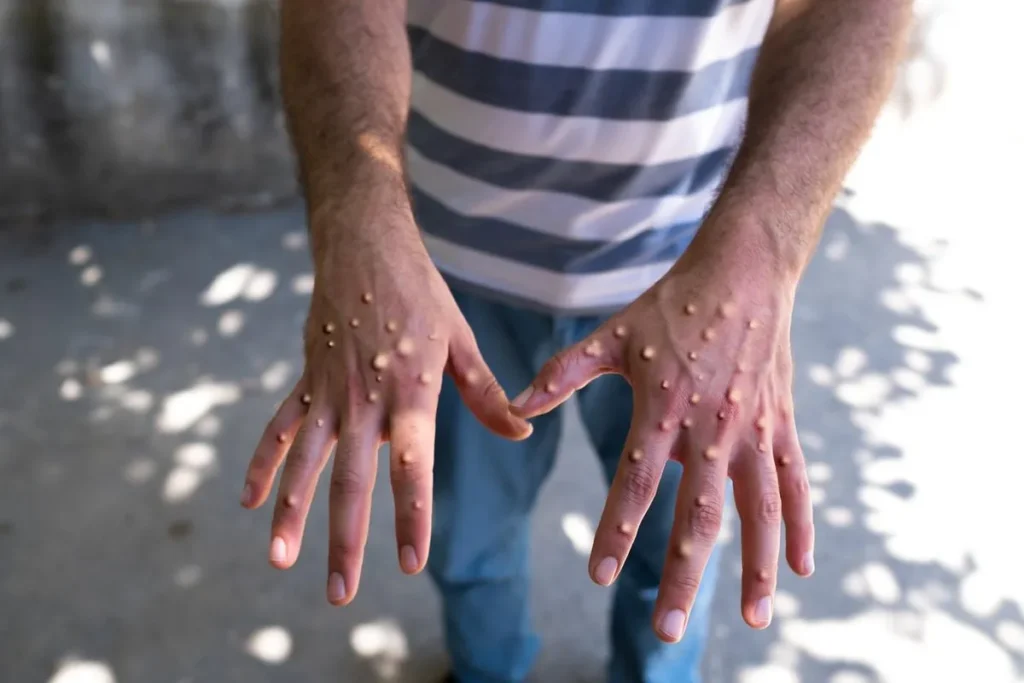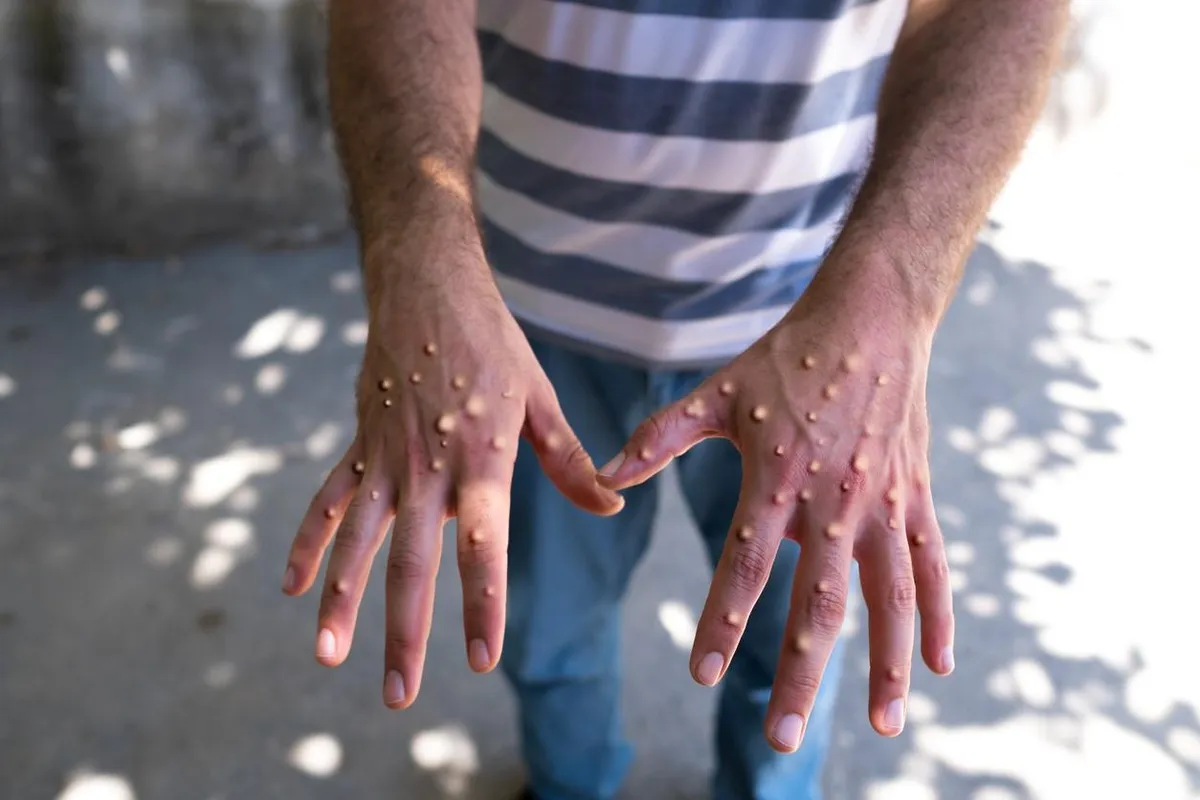Similar to smallpox, monkeypox (Mpox) is a contagious condition brought on by the Mpox virus. It’s an uncommon condition that is common in Africa, though there have been been reports of occurrences elsewhere in the world. Infected rodents are the main source of the virus’s propagation, although in some situations, infected people can also be a source of the infection. Flu-like symptoms, such as fever, chills, headache, muscle aches, exhaustion, and swollen lymph nodes, characterise Mpox. A rash that can linger for several weeks then develops afterwards. Mpox has no recognised treatment, although it typically goes away on its own.
What is Monkeypox (Mpox)?
The virus that causes monkeypox, also known as Mpox, is uncommon and belongs to the same family of orthopoxviruses as the virus that causes smallpox. When two outbreaks of a disease resembling the pox occurred in groups of monkeys being utilised for research, it was found in 1958. The Mpox virus has two distinct kinds (clades), one of which originated in Central Africa and the other in West Africa. The less dangerous West African clade is what is causing the current global pandemic (2022).
How common is Monkeypox?
Although mpox is a rare disease, more people are becoming infected in Africa and other parts of the world. It was primarily observed in Africa for many years, but since 2003, it has also been sporadically observed in other nations, including the United States. Mpox was discovered in a U.S. citizen who had travelled from Nigeria to the country in 2021, and outbreaks were noted in places outside of Africa in 2022, such as Europe, the Americas, and Australia.
Who is at risk of getting Monkeypox?
Mpox can affect anyone, but the majority of cases in Africa are among children under the age of 15. The disease appears to be more prevalent in guys who have intercourse with men outside of Africa, although there are many cases in people who don’t fit that description.
Signs and Symptoms of Mpox
Flu-like symptoms such as fever, chills, headache, muscular pains, exhaustion, and enlarged lymph nodes are among the early warning signs of measles. A rash that begins as flat, red pimples and progresses to pus-filled blisters within a few days is typical. Eventually, the blisters form a crust and peel off. It may take two to four weeks to complete the process. Not everyone who has measles exhibits all of the symptoms, and sometimes there are no obvious indicators of infection.
How is Monkeypox transmitted?
Through contact with an infected person or animal, mumps is transmitted. Animals can transmit diseases to humans by biting or scratching people, or by coming into close touch with their blood, bodily fluids, or lesions from the pox. When you come into contact with the sores, scabs, respiratory droplets, or oral secretions of an infected person, typically through close, personal settings like snuggling, kissing, or intercourse, the infection can spread from person to person.
Diagnosing Monkey Pox (Mpox):
Tests and Symptoms A rare viral illness called monkey pox, often called Mpox, can result in a rash and other flu-like symptoms. Healthcare professionals may initially investigate other viral infections like measles or chickenpox before contemplating MPox due to its rarity. Swollen lymph nodes, however, are a defining feature that sets Mpox apart from other pox viruses.
A healthcare professional will collect tissue from an open sore or lesion, which will then be subjected to genetic fingerprinting testing using polymerase chain reaction (PCR) in a laboratory in order to determine the presence of Mpox. A blood sample may also be needed to look for the Mpox virus or immune system-produced antibodies that can combat it.
Curing Monkey Pox (Mpox):
Typically, measles is a self-limiting illness with symptoms that last between two and four weeks. Most Mpox patients heal without medical intervention. Healthcare professionals will keep an eye on the patient’s condition, treat any symptoms, give medicines to control any secondary bacterial infections, and ensure that the patient stays hydrated.

Mpox does not currently have an authorized antiviral treatment, but antiviral medications might be beneficial. Only for research purposes are investigational antivirals that exhibit action against measles available.
Preventing Monkey Pox (Mpox):
Reducing human contact with infected animals and minimizing person-to-person transmission are the two best ways to stop the spread of mumps. The smallpox vaccine protects against measles, although it is only used in clinical trials right now. In order to prevent getting the infection, one should:
- Stay away from sick or deceased animals, especially those that are infected.
- Avoid touching items like bedding that could be contaminated with the virus.
- Cook all food containing animal flesh or byproducts completely.
- Wash your hands with soap and water frequently.
- Stay away from anyone who might be infected.
- Utilise safe sexual practises, such as the use of dental dams and condoms.
- When among other people, put on a face mask that covers your mouth and nose.
- Frequently touched surfaces should be cleaned and disinfected.
- Use personal protective equipment (PPE) when caring for infected individuals.
Duration and Fatality of Monkey Pox (Mpox):
Healthcare professionals watch patients until the rash clears up during the average duration of measles, which is two to four weeks. Mpox is less severe than smallpox, but it still has the potential to cause fatal consequences such pneumonia, encephalitis, or eye infections.
Monkey Pox (Mpox) vs. Chickenpox:
Skin rashes are a common symptom of both chickenpox and monkey pox, but their underlying viruses are distinct. While chickenpox is caused by a herpes virus, monkey pox is an orthopoxvirus. Although prolonged face-to-face contact or skin-to-skin contact can spread both viruses, chickenpox is more contagious and spreads more quickly. Swollen lymph nodes are more common in Mpox patients than in chickenpox patients. The chickenpox rash comes in waves, whereas the Mpox sores appear at the same time. While Mpox symptoms take two to four weeks to go away, chickenpox symptoms, including the rash, typically get better within two weeks.
Mpox vs. smallpox
Smallpox and monkeypox (Monkey Pox) are caused by separate viruses despite being members of the same orthopoxvirus family. Monkeypox (Monkey Pox) is still a public health issue even though smallpox was eradicated worldwide by 1980 as a result of successful vaccination campaigns. Monkeypox (Monkey Pox) was less contagious and harder to spread than smallpox. Although Monkeypox (Monkey Pox) symptoms are similar to those of smallpox, they are typically less severe.
Final Words
The COVID-19 epidemic, which fundamentally altered our way of life, has presented us with a significant challenge during the past few years. The media is already reporting on monkey pox (Mpox) as a potential new threat, even as we try to get back to normal. Although the cause of monkey pox is unknown, it is known that it is spread by close contact, such as kissing and sexual activities. Avoiding contact with sick people, regularly washing your hands, and donning a mask indoors in crowded areas are the best ways to safeguard yourself.









